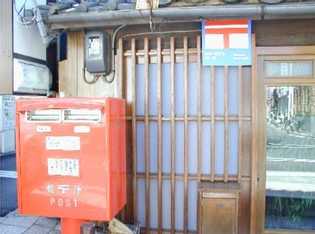日本の郵便制度 - The Japanese Postal System
April 20, 1871, the first steps were taken to begin the national postal system in Japan, by Mr. Hisoka Maejima,” the father of the postal system.” He patterned it after the systems he had seen in Europe and Great Britain. In 1873, the new Japanese postal system was nationalized and monopolized by the government. Postal rates were standardized and in 1877, Japan joined the Universal Postal Union and abolished all foreign post offices in Japan.
1871年4月20日は、全国規模の郵便制度が「郵便制度の父」前島密によって、その第一歩を踏み出した日です。前島は、ヨーロッパとイギリスの郵便制度を視察した後、これを基に日本の郵便制度を考案しました。1873年には郵便制度は国有化され、政府の独占となりました。郵便料金も標準化され、日本は1877年、万国郵便連合に加盟し、国内にあった外国の郵便局をすべて廃止しました。
How did the Japanese handle mail before the 1870s? In 646, a system of post horses was established for communication between government and military centers in Kyoto, Osaka and Nara. The word “post” comes from the place these horses were kept. That system began in the T’ang Dynasty (618 – 907) in China. Some historians say Genghis Khan invented the first postal delivery system. America’s Pony Express mail service had the same roots and was extremely efficient. However, it only lasted about two years.
では、郵便制度が誕生する以前、郵便物はどのように処理されていたのでしょうか。646年、朝廷と京都、大阪、奈良といった軍事拠点を結ぶため、駅伝制度が生まれました。「駅」という言葉は、この制度で使われた馬を常駐させておく場所から来ています。この制度は唐王朝時代(618〜907)に始まりました。ジンギス・カンがその考案者であるという歴史家もいます。同じくこの制度をルーツに持つアメリカのポニー・エクスプレスの郵便業務は、非常に効率的でしたが、わずか2年で廃止されてしまいました。
In 718, mail stations were established to make communication with Heijokyo (Nara), the capital, easier. Later, this system deteriorated, only to be revived by the Kamakura Shogunate. During these two ancient periods, the Shukuba Machi (post towns) were built and prospered. Later, these towns came to be major population centers in Japan. The Shukuba Machi declined in the years between the Kamakura and Edo Eras, but eventually, they were again revived. This tradition lasted into the 1870s, until the innovations brought about by Mr. Maejima were put into effect.
718年、平城京とほかの地方との通信を容易にするため、駅が設立されました。この制度は衰退しますが、後に鎌倉幕府によって再興されます。この二つの時代の間に、宿場町が生まれ活況を呈しました。その後、こうした宿場町は日本の人口集中地区へと発展していきます。 宿場町は、鎌倉時代から江戸時代の間に一度衰退しますが、その後再び活気づきます。そしてその繁栄は、前島密によって画期的な郵便制度が実現される1870年代まで続きました。
The postal system became a profit-making business by 1900, and today there are more than 2,300 post offices in Japan. The Japanese Post Office does more than handle mail. It is also a kind of bank, which is very popular with the people.
郵便制度は、1900年までに黒字に転じ、日本には現在2300を超える郵便局があります。 日本の郵便局は単に郵便物を取り扱うだけでなく、一種の銀行としても機能しており、人々にたいへん親しまれています。
These days, postal workers benefit from the use of many machines and computers. The Japanese Postal System handles more mail every year than any other country in the world, except the United States. The Postal Code System – a way of numbering geographical areas like the U.S. zip code system – was adopted in 1968 by Japan. Matsue’s postal code is 690.
近年、郵便業務も機械化やコンピュータの導入が進み、今や日本の年間郵便物取扱量は、アメリカに次いで世界第2位となっています。 1968年には郵便番号制度が導入されました。ちなみに松江市の郵便番号は690‐××××です。
Don’t you think the postal system in Japan is exceptionally good, and very necessary to our lives? I do, and I also admire its efficiency. In 1980, the Japanese Post Office handled 15.8 billion pieces of mail. It’s a very busy business!
日本の郵便制度は非常に優れており、私たちの生活に不可欠なものだと思います。その効率の良さにも舌を巻いてしまいます。皆さんはいかがですか。1980年に日本で配達された郵便物の総数は、158億通にも上りました。実に忙しい仕事です。
